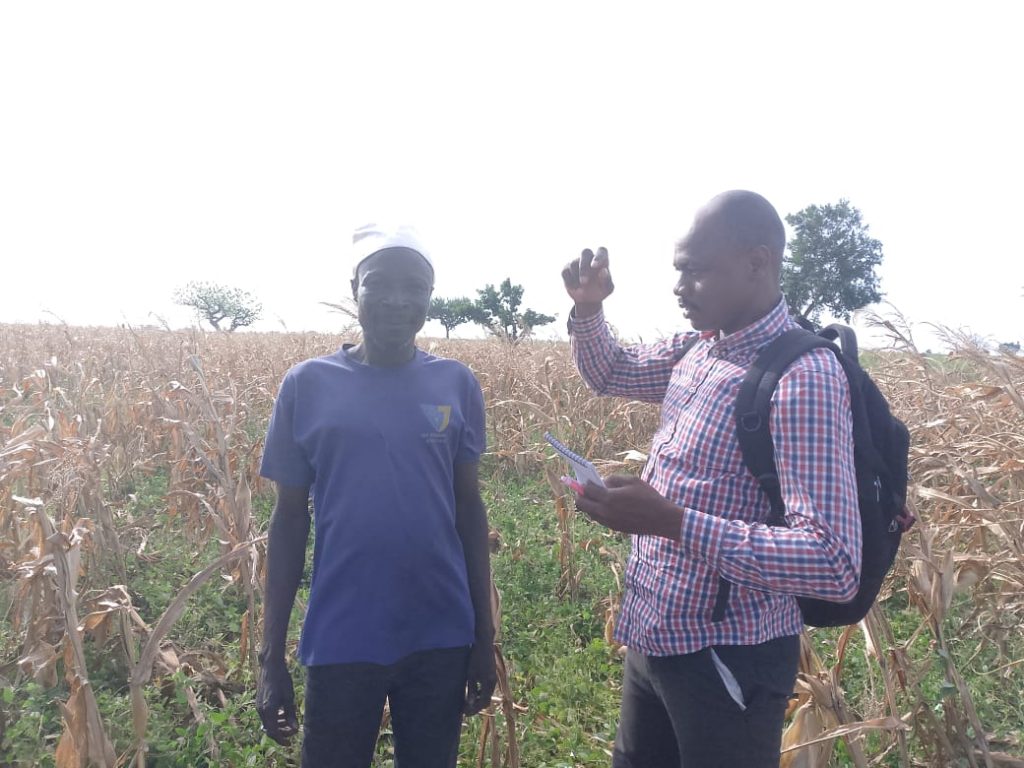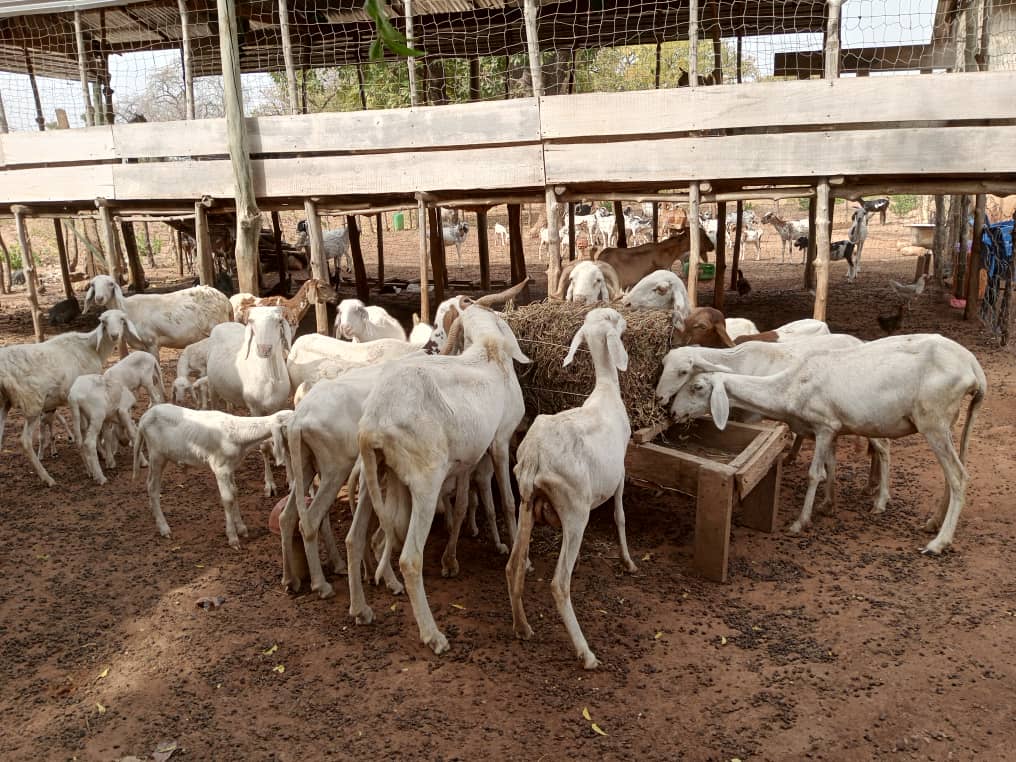
A Feature by Solomon Gumah from GNA
Nabuli (N/R), March 15, GNA - According to the Ministry of Food and Agriculture (MOFA), more than three-quarters of farmers in the Northern Region depend on rainfall for their agricultural activities.
However, data from Ghana’s Meteorological Agency reveals a concerning pattern, showing that the area’s mean yearly precipitation has decreased by 20 percent since 2000, accompanied by an increase in both the frequency and severity of droughts.
The escalating climate crisis endangers both local and global food security and brings numerous farming communities to the edge of ruin.
Trends in Rainfall Patterns and Effects of Drought in Ghana
In 1983, Ghana experienced one of its worst famines due to an intense drought combined with catastrophic bushfires. This led to critically low rainfall levels across various regions, with several areas reporting their lowest average precipitation, plummeting to just half of what was usual.
This led to significant losses in crops, food shortages, and extensive malnutrition impacting roughly 12 percent of the nation's populace.
In 2020, a comparable drought during both primary and secondary growing periods impacted significant farming regions such as the Afram Plains, Kintampo, and Ejura Sekyere - Odumasi in the south of the nation. This led to a decline in the nationwide average maize production, dropping from 3.8 metric tons per hectare in 2019 to 3.3 metric tons per hectare in 2020.
In the 2024 agricultural season, the Northern Regional Office of MOFA stated that approximately 460,784 hectares, which constitutes 60% of the area under cultivation within the region, was impacted by drought conditions. The most adversely affected zones included Savelugu, Mion, Gushegu, Nanumba North, Karaga, and Yendi. Major food staples like cowpeas, corn, rice, soybeans, millet, peanuts, and yams suffered significantly due to these harsh weather patterns.
A dry spell typically refers to an extended duration of significantly reduced precipitation levels, leading to water shortages that adversely affect agricultural activities, degrade natural habitats, and jeopardize public health. The severe consequences for local economies are profound; according to MOFA data, farmers have incurred financial losses totaling around GHC 3.5 billion in eight regions within the nation, particularly impacting areas like the northern region.
Farmers' Tales of Their Challenges
Bright Sanja, who prefers not to use his real name, is a 35-year-old subsistence farmer from Gushegu. He recently lost his complete 30-acre peanut plantation and has no backup occupation.
He currently finds it difficult to provide for his family of six and covers their schooling costs. In an interview with the Ghana News Agency (GNA), he mentioned that access to basic irrigation tools might have alleviated his situation.
He stated that "Despite losing our farms to the drought, an irrigation system supplied to us within this community could aid in decreasing poverty, hunger, and the movement of people from rural areas to cities."
A 50-year-old farmer named Mahamudu Hafiz from the Yendi Municipality described how the dry spell affected both his crop production and income levels. He also mentioned that due to water shortages, his animals have become weaker and more susceptible to illnesses.
"I incurred higher expenses on veterinary care because of unexpected disease outbreaks," he stated. "Goats that were previously sold for GHC 1,000 can now be bought for under GHC 500." He indicated his readiness to adopt any irrigation technologies at hand that could enhance his means of subsistence and allow him to remain profitable in agriculture.
Hussein Ziberu, a pastoralist, expressed to GNA his distress over losing four cows, ten goats, and fifteen sheep from May through September 2024. He also revealed that the severe circumstances led to miscarriages among his animals, compelling him to move in search of pastureland. This migration ultimately resulted in clashes with other farming communities.
These true tales highlight the critical necessity for eco-friendly answers to escape the loop of losses and vulnerabilities.
Irrigation Technology: A Route to Resilience
Specialists contend that funding for irrigation technologies has the potential to revolutionize farming practices in the Northern Region, enabling agricultural adaptation to climate shifts and safeguarding farmer incomes. Such infrastructure would provide a steady source of water, lessen reliance on precipitation, and maintain yields through periods of drought.
Specialists suggest implementing basic irrigation methods such as drip irrigation systems. These systems enable water to trickle gradually into the soil near the base of each plant via tiny openings in hoses. This approach conserves water, minimizes weed proliferation, and ensures that moisture reaches the areas where plants require it most.
One straightforward irrigation technique suggested by specialists is Mulch Basin Irrigation. This method involves cultivating small depressions around plants and topping the earth with mulch. It aids in water conservation, minimizes evaporation rates, and enhances overall soil quality.
Another technique suggested for farmers is Farrow Irrigation. This approach entails directing water to flow through narrow channels situated between crop rows, allowing it to seep into the area around the roots. It works best for extensive plots and relies on gravity to disperse the water effectively.
Successful Examples of Nations That Implemented Irrigation Technologies
During the 1960s, India introduced the Green Revolution, an effort that encompassed advancements in irrigation systems. As a result, this program caused a significant boost in agricultural output, notably for crops like rice and wheat. To illustrate, the production of rice surged from approximately 2 tons per hectare during the 1960s to around 6 tons per hectare by the mid-1990s.
To address water issues caused by climate change, Niger introduced solar-powered drip irrigation as part of the Niger Irrigation Program (NIP). This program allows small-scale to mid-sized farmers to cultivate more crops such as onions, peppers, tomatoes, okra, and watermelons. Consequently, this has boosted their income levels and enhanced their ability to withstand droughts, floods, and other weather-related disasters.
Bangladesh has enlarged its irrigation systems and consequently witnessed substantial growth in rice output. For instance, it has generated around 39.1 million tons of rice, keeping its rank as the world’s third-largest producer of rice.
Dr. Charles Nilimor, who manages the Technology Park at CSIR-SARI, suggests that embracing these climate-adaptive innovations might transform agriculture in Ghana significantly.
"Irrigation has the potential to maintain crop yields during droughts, improve rural livelihoods, decrease poverty levels, and strengthen community resistance against climate-related disruptions," he stated.
Recommendations/Way Forward
Although technology provides optimism, specialists emphasize the importance of adopting a comprehensive strategy when utilizing technological advancements to boost and optimize agricultural output throughout the entire year, ensuring both food security and self-sufficiency.
Professor Franklin Nantui Mabe, who serves as a Senior Lecturer at the Department of Agriculture at the University for Development Studies' Nyankpala campus, has urged for increased farmer education and capacity-building initiatives focused on effective irrigation techniques and climate-adaptive farming methods.
He suggested implementing mobile applications such as weather prediction tools and farming guidance programs to obtain information and counsel for handling drought conditions.
Professor Mabe suggested incorporating trees within agricultural systems to offer shading benefits, enhance soil quality, and boost biodiversity. He also emphasized the importance of investing in research and development, as well as pursuing greater financial support for investigating advanced irrigation techniques and farming methods tailored to Ghana’s evolving climatic conditions.
Conclusion
The dry spell crisis in Northern Region and the country as whole, is not just a seasonal challenge but a long-term threat to food security and rural livelihoods. By investing in irrigation technology, training farmers, and fostering research and innovation, Ghana could protect its agriculture future and empower communities to thrive despite climate change.
GNA
EA/CA
 Provided by SyndiGate Media Inc. (
Syndigate.info
).
Provided by SyndiGate Media Inc. (
Syndigate.info
).


